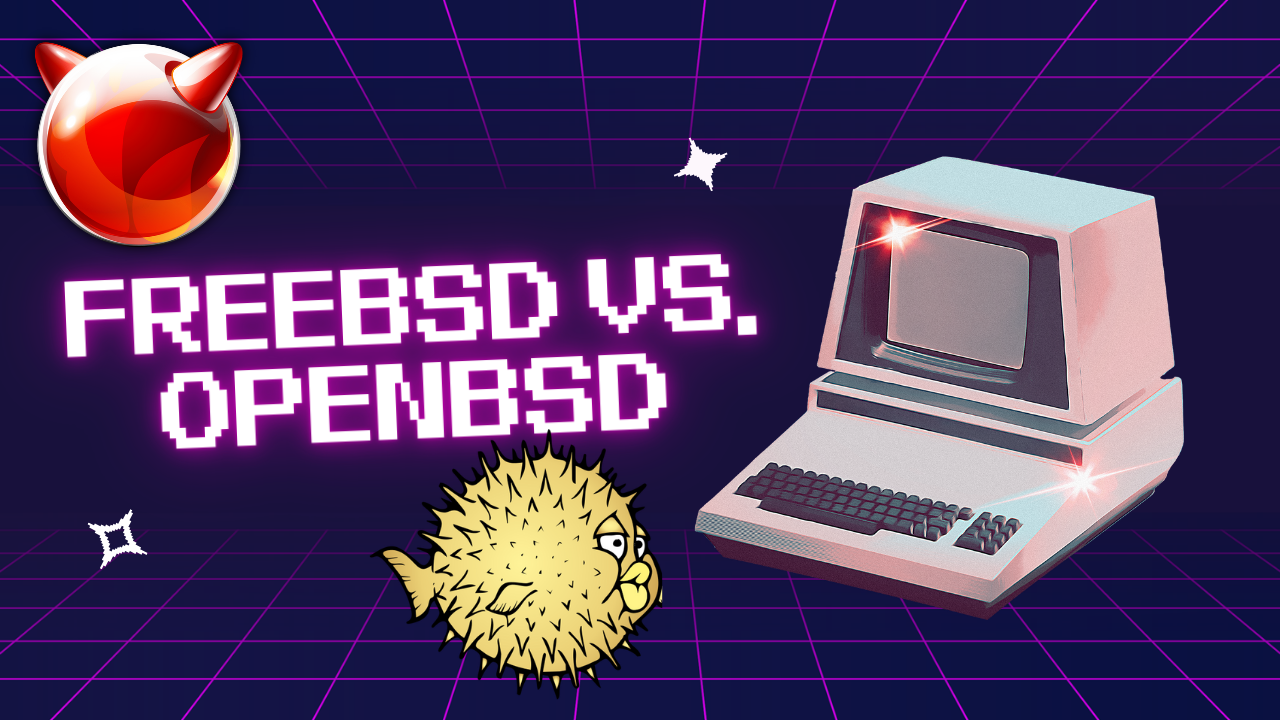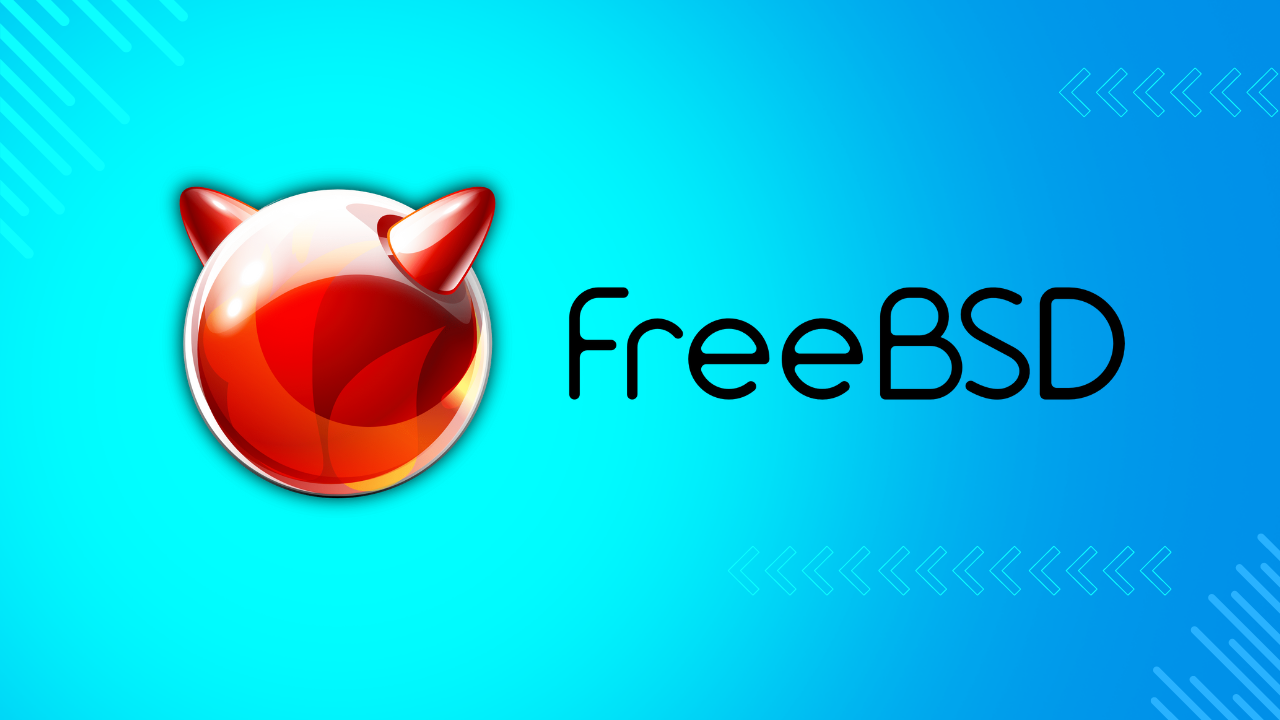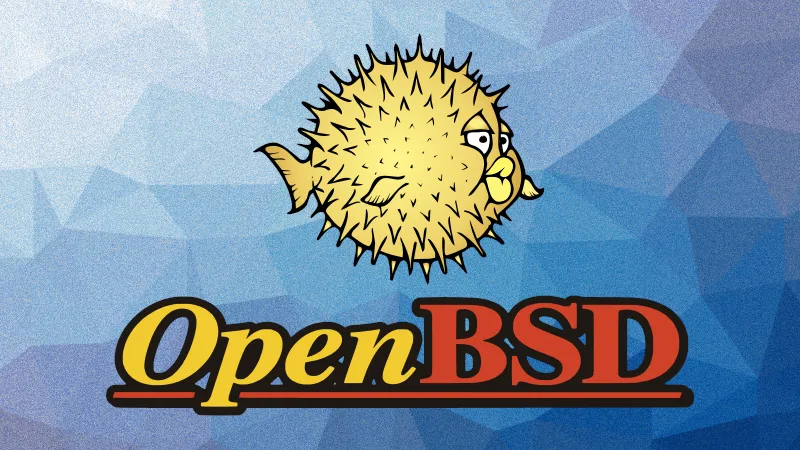FreeBSD vs. OpenBSD: A Detailed Comparison

When it comes to choosing a Unix-like operating system, FreeBSD and OpenBSD are two of the most popular options. Both have their own strengths, focuses, and unique features that cater to different types of users and use cases. This comprehensive comparison will explore various aspects of FreeBSD and OpenBSD, including performance, security, ease of use, community support, and more, to help you decide which one is better suited for your needs.
1. Introduction to FreeBSD and OpenBSD
FreeBSD

FreeBSD is a free and open-source Unix-like operating system that descended from the Berkeley Software Distribution (BSD). It is renowned for its robustness, performance, and advanced networking capabilities. FreeBSD is used in various applications, including web servers, storage appliances, and embedded devices. It is also the basis for several well-known projects, such as FreeNAS (now TrueNAS), pfSense, and the operating system for the PlayStation 4.
OpenBSD

OpenBSD is another free and open-source Unix-like operating system derived from BSD. It is widely recognized for its emphasis on security, code correctness, and proactive security features. OpenBSD is often used in environments where security is paramount, such as firewalls, intrusion detection systems, and other security appliances. OpenBSD also maintains a focus on simplicity and adherence to Unix principles.
2. Performance
FreeBSD
FreeBSD is known for its high performance, particularly in networking and storage applications. It features an advanced TCP/IP stack, support for the ZFS file system, and numerous performance tuning options. FreeBSD's performance is further enhanced by its ability to run on a wide range of hardware, including high-end servers, desktop systems, and embedded devices.
Networking
FreeBSD's networking stack is highly optimized, making it a preferred choice for network appliances and high-traffic web servers. It supports various networking features, such as network address translation (NAT), traffic shaping, and advanced routing capabilities.
Storage
FreeBSD's support for the ZFS file system is a significant advantage. ZFS provides features like data integrity, compression, snapshots, and cloning, making it an ideal choice for storage solutions. FreeBSD also supports other file systems, including UFS, UFS2, and NFS.
OpenBSD
OpenBSD prioritizes security and code correctness over raw performance. While it may not match FreeBSD in terms of raw performance, it offers sufficient performance for many applications, especially those that prioritize security.
Networking
OpenBSD's networking stack is designed with security and simplicity in mind. It includes features like PF (Packet Filter), a powerful firewall and NAT solution that originated from OpenBSD and is now used in various other projects.
Storage
OpenBSD supports several file systems, including FFS (Fast File System), a variant of UFS, and the read-only filesystem, CD9660. While it does not support ZFS natively, it focuses on providing stable and secure storage options.
3. Security
FreeBSD
FreeBSD offers a robust security model with several built-in features. While security is a priority, it is balanced with performance and usability. FreeBSD includes features such as:
- Jails: Lightweight virtualization that isolates applications and services.
- Capsicum: A capability-based security framework for fine-grained access control.
- Audit Framework: Provides detailed logging of system events for security auditing.
OpenBSD
OpenBSD is renowned for its proactive security approach. It is developed with a strong emphasis on code correctness and security from the ground up. Key security features of OpenBSD include:
- Default Secure Configuration: OpenBSD ships with a secure default configuration, reducing the need for additional hardening.
- Proactive Security Features: OpenBSD includes several security features, such as W^X (write XOR execute), ASLR (address space layout randomization), and stack protection mechanisms.
- Integrated Cryptography: OpenBSD includes integrated cryptographic libraries and tools, such as OpenSSH and LibreSSL, which originated from the OpenBSD project.
4. Ease of Use
FreeBSD
FreeBSD is designed to be versatile and user-friendly, with extensive documentation and a large community. It offers various tools and features to simplify system administration:
- Ports Collection: The FreeBSD Ports Collection provides a simple way to install and manage thousands of third-party software packages.
- pkg: The binary package manager for FreeBSD, which simplifies software installation and management.
- Handbook: The FreeBSD Handbook is a comprehensive resource that covers installation, configuration, and administration.
OpenBSD
OpenBSD prioritizes simplicity and adherence to Unix principles, which can make it more challenging for new users but rewarding for those who appreciate its philosophy. Key features include:
- Ports and Packages: OpenBSD also has a ports system and package manager, though it is smaller and more security-focused than FreeBSD's.
- Man Pages: OpenBSD's man pages are exceptionally detailed and well-maintained, providing valuable information for users and administrators.
- Default Installation: OpenBSD's default installation is minimal and secure, encouraging users to understand and configure the system according to their needs.
5. Community Support
FreeBSD
FreeBSD has a large and active community, with extensive resources available for users and developers:
- Mailing Lists: Numerous mailing lists for different aspects of FreeBSD development and usage.
- Forums: Online forums where users can ask questions, share knowledge, and discuss topics related to FreeBSD.
- IRC Channels: Real-time support and discussion on various IRC channels.
- Events: FreeBSD conferences and events, such as AsiaBSDCon and EuroBSDCon, where users and developers can meet and collaborate.
OpenBSD
OpenBSD's community is smaller but highly dedicated and knowledgeable. Resources include:
- Mailing Lists: Active mailing lists for user support, development, and security announcements.
- IRC Channels: Real-time support and discussion on IRC channels.
- Hackathons: Regular developer hackathons where OpenBSD developers collaborate on improving the system.
6. Development Philosophy and Release Cycle
FreeBSD
FreeBSD follows a more conventional development and release cycle, with major releases every few years and regular updates in between. The FreeBSD development philosophy balances innovation with stability, making it suitable for a wide range of applications.
OpenBSD
OpenBSD follows a strict development philosophy focused on security, correctness, and simplicity. It has a biannual release cycle, with new versions released every six months. Each release undergoes rigorous testing and auditing to ensure high quality and security.
7. Use Cases and Real-World Examples
FreeBSD
FreeBSD is used in various applications, from web hosting and cloud infrastructure to embedded systems and storage solutions. Some notable use cases include:
- Netflix: Uses FreeBSD for its content delivery network (CDN) due to its high performance and advanced networking capabilities.
- Sony: Utilizes FreeBSD in PlayStation consoles for its stability and performance.
- NetApp: Employs FreeBSD in its storage appliances, leveraging the ZFS file system.
OpenBSD
OpenBSD is often used in security-focused applications, such as firewalls, intrusion detection systems, and secure servers. Some notable use cases include:
- pfSense: A popular firewall and router software based on FreeBSD but originally derived from OpenBSD's PF.
- OpenSSH: A widely-used secure shell (SSH) protocol suite that originated from the OpenBSD project.
- LibreSSL: A fork of OpenSSL developed by the OpenBSD project to improve security and code quality.
8. Hardware Support
FreeBSD
FreeBSD supports a wide range of hardware platforms, including x86, ARM, PowerPC, and more. It is known for its excellent hardware compatibility and performance on various systems, from high-end servers to embedded devices.
OpenBSD
OpenBSD also supports multiple hardware platforms, including x86, ARM, SPARC, and more. While its hardware support is more conservative compared to FreeBSD, it focuses on ensuring that supported hardware is stable and secure.
9. Licensing
FreeBSD
FreeBSD uses the permissive BSD license, which allows for extensive reuse and modification of its code. This flexibility makes it attractive to companies and projects that want to incorporate FreeBSD code into their products without the restrictions of more copyleft licenses.
OpenBSD
OpenBSD also uses the BSD license but places a strong emphasis on code quality and security. The project is known for its strict licensing policies, ensuring that all included software is free of encumbrances and compatible with the project's goals.
10. Summary
FreeBSD
- Strengths: High performance, advanced networking, ZFS support, extensive documentation, large community.
- Ideal for: Web hosting, cloud infrastructure, embedded systems, storage solutions.
OpenBSD
- Strengths: Security, code correctness, simplicity, proactive security features, detailed documentation.
- Ideal for: Firewalls, intrusion detection systems, secure servers, security appliances.
Here's a comparison table summarizing the key points from the article "FreeBSD vs. OpenBSD: A Detailed Comparison":
| Feature | FreeBSD | OpenBSD |
|---|---|---|
| Performance | High performance, especially in networking and storage with ZFS support. | Adequate performance with a focus on security and code correctness. |
| Security | Balanced security features like Jails, Capsicum, and the Audit framework. | Strong emphasis on proactive security, integrated cryptographic libraries, and secure by default. |
| Ease of Use | Extensive documentation, Ports Collection, and pkg system for easy software management. |
Simple and secure default installation, detailed man pages, and a smaller ports system. |
| Community Support | Large and active community, extensive online resources, and frequent events. | Smaller, dedicated community with regular developer hackathons and strong support channels. |
| Development Philosophy and Release Cycle | Balanced innovation and stability, with regular updates and major releases every few years. | Strict focus on security and simplicity, with a biannual release cycle and rigorous testing. |
| Use Cases | Web hosting, cloud infrastructure, embedded systems, storage solutions. | Firewalls, intrusion detection systems, secure servers, security appliances. |
| Hardware Support | Wide range of hardware platforms including x86, ARM, PowerPC. | Supports multiple platforms, focusing on stability and security for supported hardware. |
| Licensing | Permissive BSD license, flexible for reuse and modification. | Strict licensing policies to ensure all included software is free of encumbrances. |
Conclusion
Both FreeBSD and OpenBSD are powerful Unix-like operating systems with their own unique strengths and focuses. FreeBSD excels in performance, networking, and storage applications, making it a versatile choice for a wide range of use cases. OpenBSD, with its strong emphasis on security and code correctness, is ideal for environments where security is the top priority.
Ultimately, the choice between FreeBSD and OpenBSD depends on your specific needs and priorities. If you require high performance and advanced features like ZFS, FreeBSD is likely the better choice. If security and simplicity are your main concerns, OpenBSD offers a secure and reliable platform.
By understanding the differences and strengths of each system, you can make an informed decision that best

Absolute FreeBSD, 3rd Edition: The Complete Guide to FreeBSD https://amzn.to/3ImQrKt
Read Next
How to install certbot on FreeBSD
Certbot is a tool that automates the process of obtaining and renewing SSL/TLS certificates from Let’s Encrypt, a free Certificate Authority (CA). This guide will walk you through
An In-Depth Guide to ZFS on FreeBSD
ZFS, or the Zettabyte File System, is an advanced file system and volume manager originally developed by Sun Microsystems. Known for its robustness, scalability, and numerous features, ZFS is a

